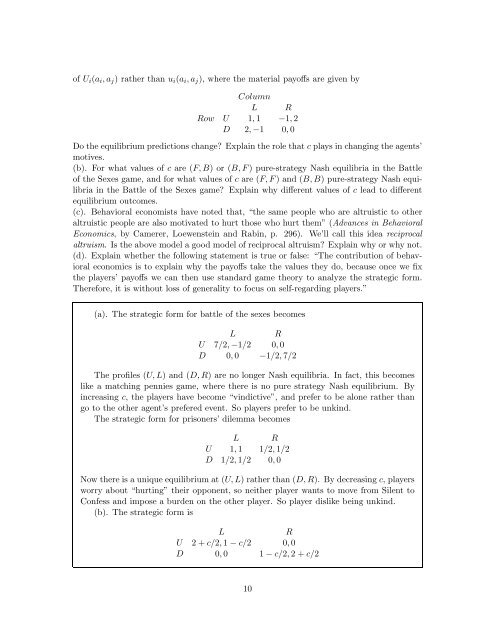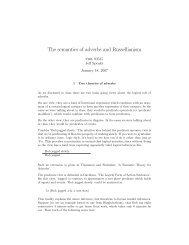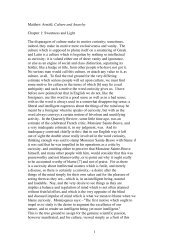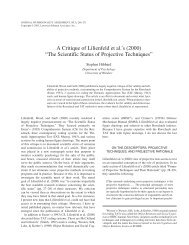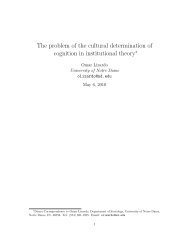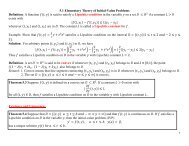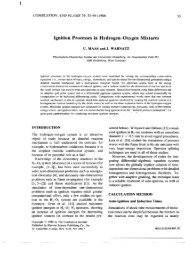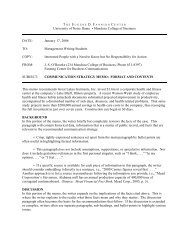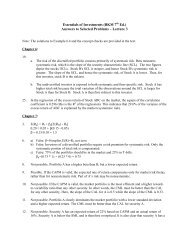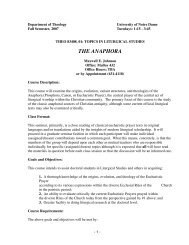Problem Set 1 1. Games in Strategic Form: Do questions 1-4 and ...
Problem Set 1 1. Games in Strategic Form: Do questions 1-4 and ...
Problem Set 1 1. Games in Strategic Form: Do questions 1-4 and ...
Create successful ePaper yourself
Turn your PDF publications into a flip-book with our unique Google optimized e-Paper software.
of U i (a i ,a j ) rather than u i (a i ,a j ), where the material payoffs are given byColumnL RRow U 1,1 −1,2D 2,−1 0,0<strong>Do</strong> the equilibriumpredictions change? Expla<strong>in</strong> the role that cplays <strong>in</strong> chang<strong>in</strong>g theagents’motives.(b). For what values of c are (F,B) or (B,F) pure-strategy Nash equilibria <strong>in</strong> the Battleof the Sexes game, <strong>and</strong> for what values of c are (F,F) <strong>and</strong> (B,B) pure-strategy Nash equilibria<strong>in</strong> the Battle of the Sexes game? Expla<strong>in</strong> why different values of c lead to differentequilibrium outcomes.(c). Behavioral economists have noted that, “the same people who are altruistic to otheraltruistic people are also motivated to hurt those who hurt them” (Advances <strong>in</strong> BehavioralEconomics, by Camerer, Loewenste<strong>in</strong> <strong>and</strong> Rab<strong>in</strong>, p. 296). We’ll call this idea reciprocalaltruism. Is the above model a good model of reciprocal altruism? Expla<strong>in</strong> why or why not.(d). Expla<strong>in</strong> whether the follow<strong>in</strong>g statement is true or false: “The contribution of behavioraleconomics is to expla<strong>in</strong> why the payoffs take the values they do, because once we fixthe players’ payoffs we can then use st<strong>and</strong>ard game theory to analyze the strategic form.Therefore, it is without loss of generality to focus on self-regard<strong>in</strong>g players.”(a). The strategic form for battle of the sexes becomesL RU 7/2,−1/2 0,0D 0,0 −1/2,7/2The profiles (U,L) <strong>and</strong> (D,R) are no longer Nash equilibria. In fact, this becomeslike a match<strong>in</strong>g pennies game, where there is no pure strategy Nash equilibrium. By<strong>in</strong>creas<strong>in</strong>g c, the players have become “v<strong>in</strong>dictive”, <strong>and</strong> prefer to be alone rather thango to the other agent’s prefered event. So players prefer to be unk<strong>in</strong>d.The strategic form for prisoners’ dilemma becomesL RU 1,1 1/2,1/2D 1/2,1/2 0,0Now there is a unique equilibrium at (U,L) rather than (D,R). By decreas<strong>in</strong>g c, playersworry about “hurt<strong>in</strong>g” their opponent, so neither player wants to move from Silent toConfess <strong>and</strong> impose a burden on the other player. So player dislike be<strong>in</strong>g unk<strong>in</strong>d.(b). The strategic form isL RU 2+c/2,1−c/2 0,0D 0,0 1−c/2,2+c/210


